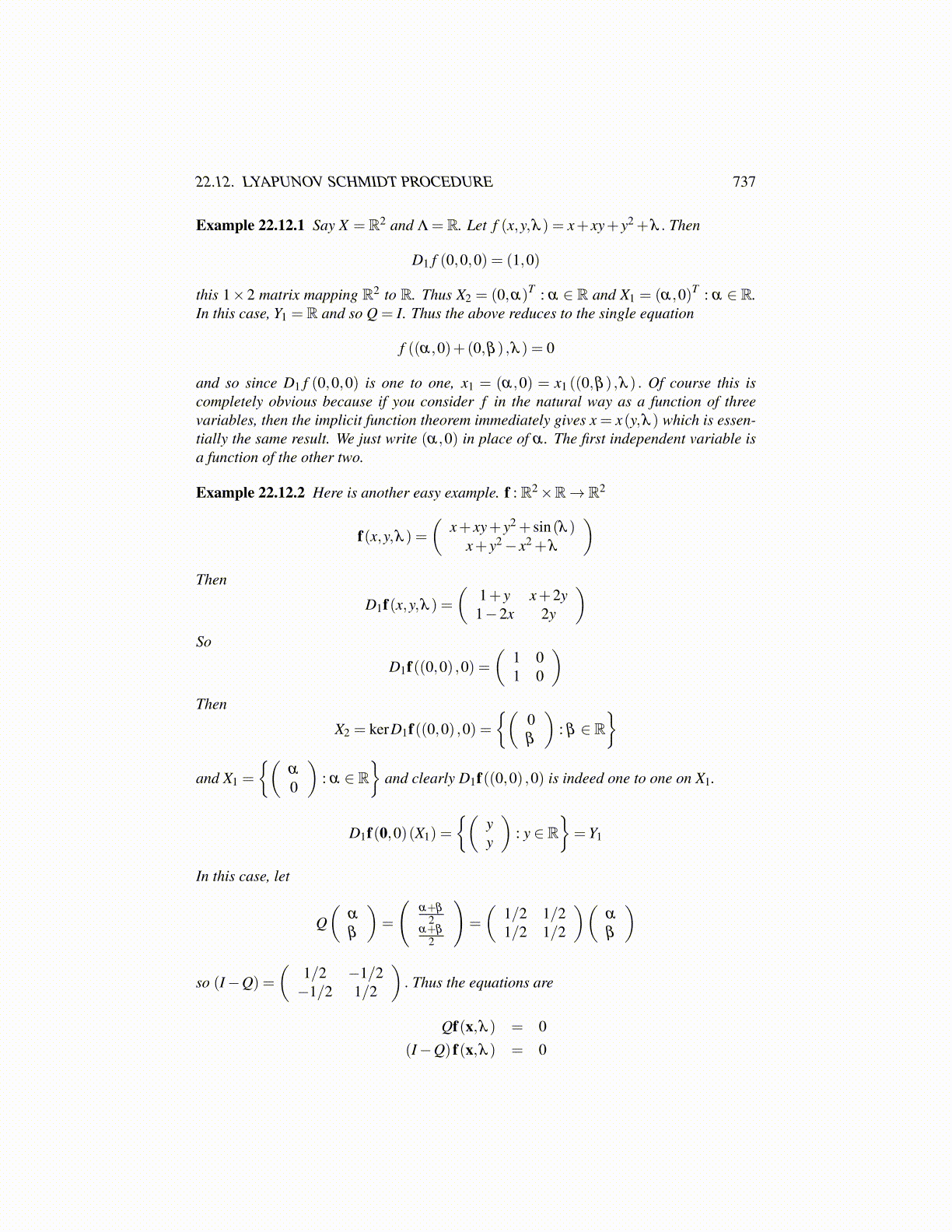
22.12. LYAPUNOV SCHMIDT PROCEDURE 737
Example 22.12.1 Say X = R2 and Λ = R. Let f (x,y,λ ) = x+ xy+ y2 +λ . Then
D1 f (0,0,0) = (1,0)
this 1×2 matrix mapping R2 to R. Thus X2 = (0,α)T : α ∈ R and X1 = (α,0)T : α ∈ R.In this case, Y1 = R and so Q = I. Thus the above reduces to the single equation
f ((α,0)+(0,β ) ,λ ) = 0
and so since D1 f (0,0,0) is one to one, x1 = (α,0) = x1 ((0,β ) ,λ ) . Of course this iscompletely obvious because if you consider f in the natural way as a function of threevariables, then the implicit function theorem immediately gives x = x(y,λ ) which is essen-tially the same result. We just write (α,0) in place of α . The first independent variable isa function of the other two.
Example 22.12.2 Here is another easy example. f : R2×R→ R2
f(x,y,λ ) =(
x+ xy+ y2 + sin(λ )x+ y2− x2 +λ
)Then
D1f(x,y,λ ) =(
1+ y x+2y1−2x 2y
)So
D1f((0,0) ,0) =(
1 01 0
)Then
X2 = kerD1f((0,0) ,0) ={(
0β
): β ∈ R
}and X1 =
{(α
0
): α ∈ R
}and clearly D1f((0,0) ,0) is indeed one to one on X1.
D1f(0,0)(X1) =
{(yy
): y ∈ R
}= Y1
In this case, let
Q(
α
β
)=
(α+β
2α+β
2
)=
(1/2 1/21/2 1/2
)(α
β
)
so (I−Q) =
(1/2 −1/2−1/2 1/2
). Thus the equations are
Qf(x,λ ) = 0(I−Q) f(x,λ ) = 0